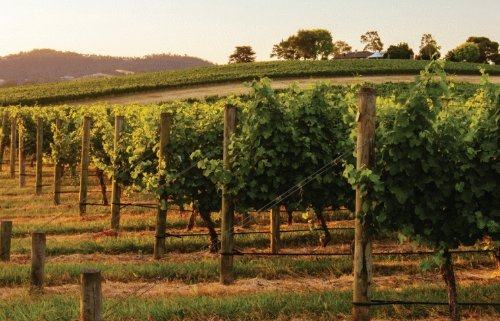Ongoing trials with a new post-emergent broadleaf herbicide expected to be available from Bayer in 2023 look set to reinforce its potential role as a versatile, valuable option in cropping regions throughout the country.
Infinity Ultra comprises a complementary co-formulation of Groups 27 and 12 (formerly Groups H and F) herbicides, pyrasulfotole and diflufenican, which will be an important addition to post-emergent spraying programs for control of a range of key broadleaf weeds in cereal crops.
Bayer market development agronomist in NSW, Gus MacLennan says Infinity Ultra is expected to be highly competitive compared to some existing herbicide standards.
He said its versatile use either alone or with a tank-mix partner – together with low application rates, will allow growers to target hard-to-control weeds in wheat, barley, oats and triticale, as well as on fallows.
Large-scale trials using grower equipment were added to the ongoing program of replicated small-plot trials across all grain growing regions this season. These include evaluations on a range of herbicide-resistant weeds, including wild radish and sowthistle.
In addition, plot trials which included compatibility evaluations when included in tank mixes and knockdown applications on fallows, were being coordinated in the Griffith, Wagga Wagga and Parkes areas.
Mr MacLennan said Infinity Ultra revealed a great opportunity to incorporate a more flexible Group 27 herbicide in mixes with other post-emergent herbicides like bromoxynil, dicamba and MCPA LVE, allowing agronomists and growers to select a tailored mix for their individual situations.
“It will offer the versatility to dial-up a mix with the active ingredients and at application rates more suited to the particular (weed and cropping) situation.
“Then there is the benefit of the combination of the two herbicide modes of action, plus adding further modes of action in a tank mix.
“Rotating and mixing modes of action is important and the use of two modes of action –and the potential to mix more, adds further chemistry groups to reduce the build-up of resistance to any one group.”
Mr MacLennan said Infinity Ultra would also help control challenging weeds, including wild radish, wireweed and sowthistle, as well as capeweed and fumitory.
He said fallow applications would target sowthistle and bladder ketmia and the herbicide’s low volatility would be particularly beneficial alongside summer cropping areas.
“We have a very diverse summer crop region, especially in the south where there are cotton, grape and vegetable crops.
“Here Infinity Ultra will help to significantly reduce potential off-target damage from more volatile or highly damaging active ingredients.”
Mr MacLennan said the new herbicide’s plant-back periods were more favourable for pulse crops compared with other standards and its cost competitiveness would be especially appreciated in more marginal areas – where applications of other herbicides can become cost prohibitive and could potentially raise plant-back concerns.
In Queensland and northern NSW, Bayer market development agronomist Richard Jackman said Infinity Ultra would particularly target sowthistle and bladder ketmia, with trials under way to investigate its performance on other weed targets in fallows, such as fleabane and volunteer legumes.
Mr Jackman said one of the fallow trials this season was at Bowenville (between Toowoomba and Dalby) showed strong control of fleabane and sowthistle prior to being sown to a winter cereal crop.
“Infinity Ultra is less antagonistic in mixtures with glyphosate when compared with 2,4-D and Starane herbicides, which can compromise weed control,” he said. “This was noticeable in the trial and its lower use rate is also an advantage.
“Compared to 2,4-D, with Infinity Ultra there is also reduced risk of off-target damage to super-sensitive cotton crops throughout those growing regions in Australia.
“The use of 2,4-D for hard-to-control weeds poses a significant challenge in terms of managing off-target damage to neighbouring sensitive crops.”
In winter cereal crops, Infinity Ultra would add a new, cost-effective herbicide mode of action to help tackle hard-to-control wild radish and capeweed, reducing the reliance on Group 2 (formerly Group B) herbicides.
An application for the registration of Infinity Ultra has been made. At the time of publication, Infinity Ultra is not a registered product.




